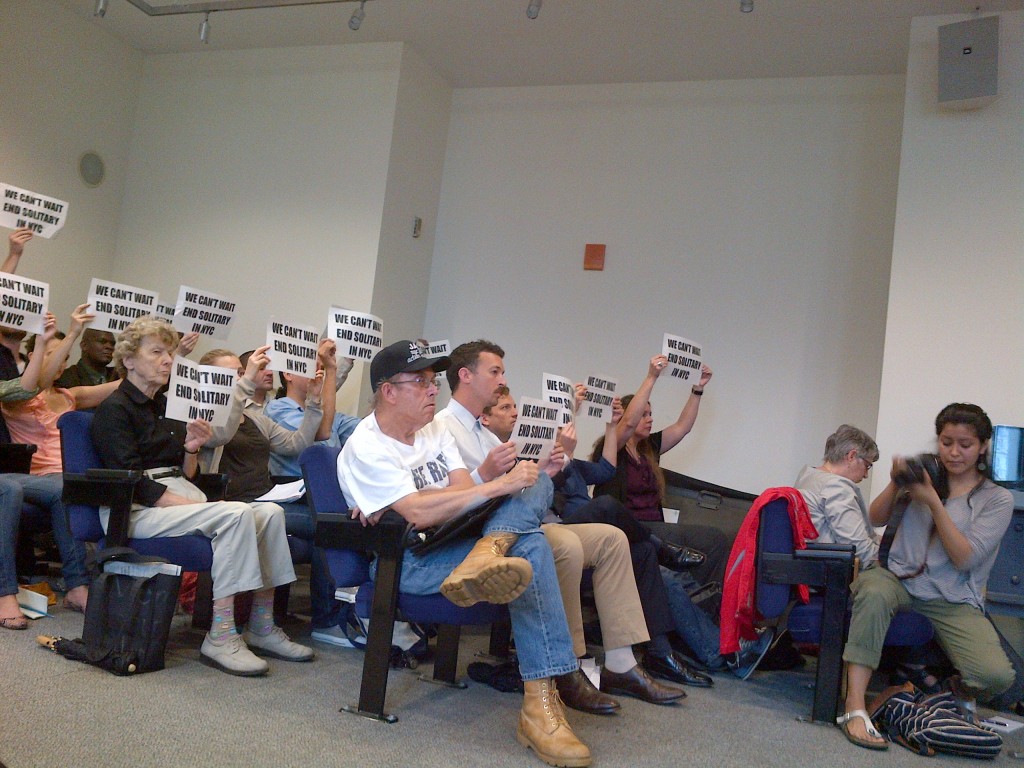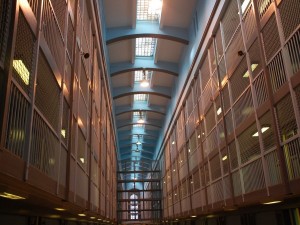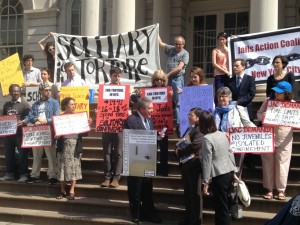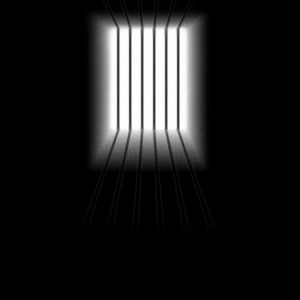Press Release from the Jails Action Coalition.
June 3 – Today, the Board of Correction denied a petition to adopt rules regulating the use of solitary confinement in jails, also known as “punitive segregation,” and decided to appoint a committee to study the practice- delaying a decision until its September meeting.
On April 9th, the NYC Jails Coalition submitted a petition to the Board of Correction asking the Board to adopt rules regarding the use of solitary confinement. The proposed rules would’ve implemented the following:
§ Prohibit DOC from placing people with mental and physical disabilities, juveniles, and young people in isolated confinement;
§ Limit the reasons for which a person can be placed in isolated confinement so that it is only used as a last resort to prevent violent conduct;
§ And increase the amount of daily out-of-cell time for those placed in isolated confinement.
At its May 13th meeting, the Board, which has oversight authority to adopt rules, postponed voting on the petition and the proposed rules until June 3rd. Today, the Board denied rulemaking.
The DOC routinely places people in solitary confinement in response to a variety of infractions. Contrary to the national trend toward reducing the harmful use of isolation in jails and prisons, the New York City Department of Correction (DOC) expanded its punitive segregation capacity 27% in 2011, and another 44% percent in 2012. This expansion has left NYC with one of the highest rates of solitary confinement in the country. In fact, the DOC has more punitive segregation cells than it did in the 1990s, when it housed many thousands more people than it does today.
“We are extremely disappointed with the Board of Correction’s vote to deny the petition for rulemaking on solitary confinement and further delay a decision on the practice. Isolating a person in a cell for up to 24 hours a day without any mental stimulation or human contact causes serious psychological and developmental harm. Yet the Department of Correction is currently incarcerating at least 1000 people, including teenagers and people with mental and physical disabilities, in these conditions,” said Jennifer Parish, Director of Criminal Justice Advocacy at the Urban Justice Center Mental Health Project, and member of JAC. “It is critical for the Board to adopt rules curtailing the use of solitary confinement. We hope that the Board will initiate rule-making at its September meeting.”







Follow the #HALTsolitary Campaign